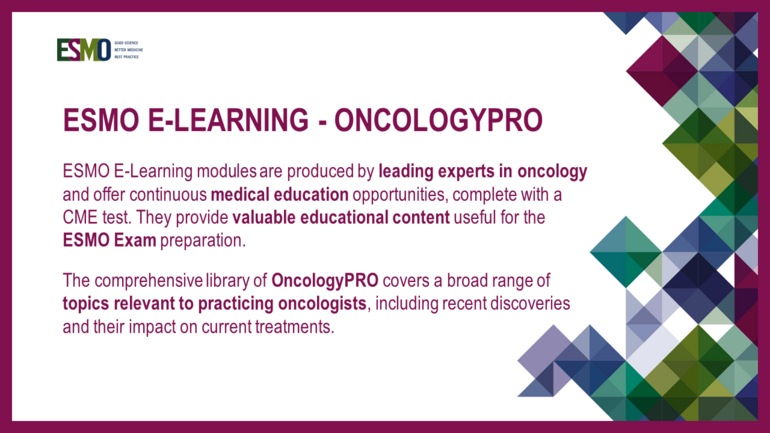In this new E-Learning module, the authors elaborate on a state of science in biomarkers for patients with head and neck cancer. Applications, but also limitations of currently validated biomarkers are discussed along with examples of biomarkers in development. Thus, the module represents a rare comprehensive educational material in this field, especially as the authors elaborate on a basic status in disease implication, prognostic and predictive role, and future research directions for a range of imaging, tumour tissue and circulating biomarkers.
In particular, the module covers fluorodeoxyglucose (FDG)-positron emission tomography (PET), hypoxia, Epstein-Barr virus (EBV), human papillomavirus (HPV), EGFR, TP53, MAPK pathway, PI3K/AKT/mTOR pathway, immune-checkpoint pathways, tumour mutational burden, DNA repair, tumour infiltrating lymphocytes and circulating immune cells ratio, gene expression profiles, and integration of immune-related biomarkers.
In terms of validated biomarkers, the authors underline that FDG-PET imaging has a well-known role in staging and serves in radiotherapy planning and post-treatment response assessment. It has a high negative predictive value for recurrence/ persistent disease in patients with squamous cell carcinoma of head and neck (SCCHN) treated with definitive chemoradiotherapy. Early PET response after neoadjuvant systemic treatment is a biomarker for pathological response and independent prognostic factor for local tumour control and disease-specific survival.
EBV is predominantly associated with the non-keratinising subtype of nasopharyngeal carcinoma. In the endemic area, the prognostic role of plasma EBV DNA viral load has been well established with proposed different pre-treatment cut-offs. In non-endemic areas, limited studies are available showing a worse outcome for positive baseline EBV DNA. Compared to studies conducted in endemic areas, no baseline EBV DNA cut-off is available to show influence on survival outcomes. The presence or absence of EBV DNA in plasma after curative radiotherapy correlates with survival. There is no evidence of the benefit of adjuvant treatment in patients with detectable post-(chemo)radiotherapy plasma EBV DNA.
The high-risk HPV infection is a well-known cause of oropharyngeal carcinoma, and HPV-16 is the most prevalent type associated with 90% of SCCHN cases. Several studies demonstrated better prognosis of HPV-positive oropharyngeal carcinoma. Compared to HPV-negative disease, HPV-positive tumours are distinct entities due to differences in molecular profile, clinical presentation and prognosis. Three subtypes of HPV-positive oropharyngeal carcinomas have been identified through an unsupervised clustering analysis and the three clusters model showed validated prognostic role for survival and better performance than TNM staging.
EGFR is detected in more than 90% of patients with SCCHN. However, EGFR expression level does not predict response to cetuximab in patients with recurrent/metastatic SCCHN. Only a minority of patients with metastatic SCCHN present a long-lasting response to cetuximab. A signature able to predict sensitivity to cetuximab-based therapy has been developed, with basal subtype traits being typical for patients with long progression-free survival.
Lisa Licitra has reported:
Financial interests:
Advisory Board, Personal, for expert opinion in advisory boards: Astrazeneca, Bayer, BMS, Eisai, MSD, Boehringer Ingelheim, Hoffmann-La Roche Ltd, Novartis, Roche, Debiopharm International SA, Sobi, Incyte Biosciences Italy srl, Doxa Pharma srl, Amgen, Nanobiotics, GSK.
Research grant, institutional, funds received by her institution for clinical studies and research activities in which she was involved: Astrazeneca, BMS, Boehringer Ingelheim, Celgene International, Eisai, Exelixis, Debiopharm International SA, Hoffmann-La roche ltd, IRX Therapeutics, Medpace, Merck–Serono, Merck Healthcare KGaA, MSD, Novartis, Pfizer, Roche, Adlai Nortye.
Salvatore Alfieri has no interests to declare.
Silvia Buriolla has no interests to declare.
Simone Rota has no interests to declare.





